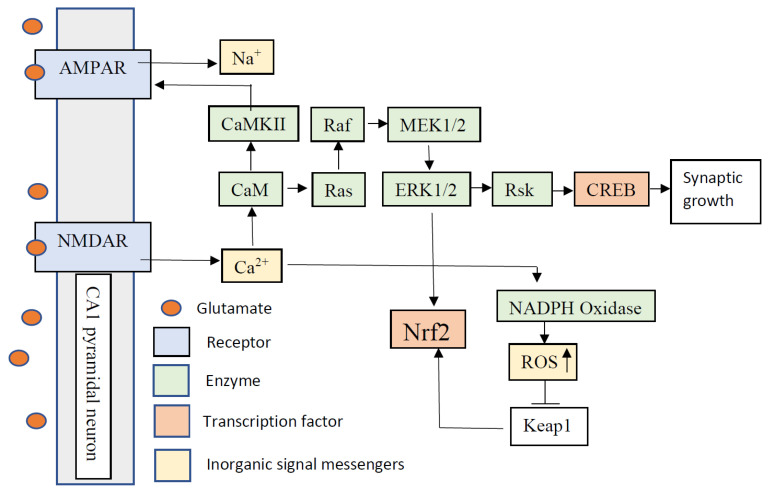Figure 2.
Putative Nrf2 signaling pathway during long-term potentiation (LTP) in the CA1 region of the hippocampus. Membrane depolarization and glutamate binding to the postsynaptic membrane receptors induce N-methyl-D-aspartate receptor (NMDAR) activation, and result in Ca2+ entry into the postsynaptic membrane. Ca2+ activates calmodulin (CaM) and calcium-calmodulin-dependent protein kinase II (CaMKII) and results in α-amino-3-hydroxy-5-methyl-4-isoxazolepropionic acid receptor (AMPAR) phosphorylation. When glutamate binds to AMPAR, they become permeable to Na+, which is important for stable activation of NMDAR. Ca2+ activates MAP kinase pathways (Ras/Raf/MEK1/2-ERK1/2-Rsk), which phosphorylate cAMP response element-binding protein (CREB). CREB induces mRNA transcription for synapse growth. Extracellular signal-regulated kinases (ERK1/2) can phosphorylate nuclear factor erythroid 2–related factor 2 (Nrf2). Keap1 is a negative regulator of Nrf2. Reactive oxygen species (ROS) inactivate Keap1, which allows Nrf2 to become active. NADPH oxidase is an ROS source that can be activated by Ca2+, and is translocated into neurons via NMDA receptors.

